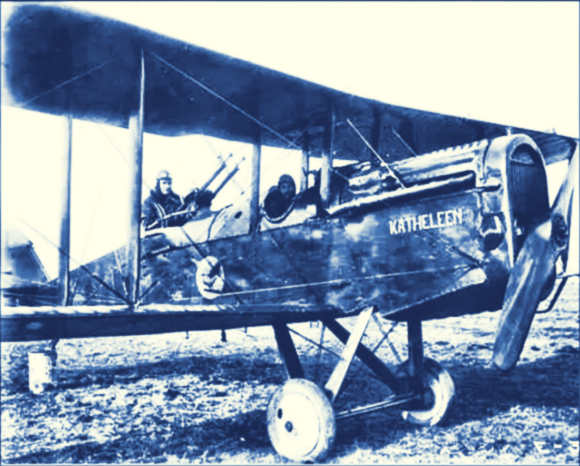American Failure: WWI Combat Aircraft Production
Published: 23 December 2022
via the Roads to the Great War web site

roads_acproduction_2
A U.S. Built DH-4 with Liberty Engine That Did Make It to the Front
The United States did not produce any aircraft of its own design for use at the front during World War I. American industry did make two contributions to the airwar. Building the British designed DH-4, and equipping it with the ground-briaking Liberty-12 Engine. By the end of the war, Dayton-Wright delivered 3,106 DH-4s, while the Fisher Body Division of General Motors built 1,600 and the Standard Aircraft Corporation added another 140, bringing the total to 4,846. The remaining 7,500 DH-4s still on order were cancelled. Automakers Ford, Lincoln, Packard, Marmon, and Buick produced 20,748 Liberty-12s, with varying quality, before the Armistice. These numbers, however, were far, far below the targets created shortly after America’s entry into the war. This failure is considered the greatest failure of America’s mobilization effor in the Great War. [Of course, it must be kept in mind that the nation had only been at war for 19 months at the time of the Armistice.] Nevertheless, America’s aircraft production proved to be a major disappointment and was the subject of numerous investigations and hearings that began even before the war ended.
Even as the war in Europe demonstrated dramatic improvements in the potential and sophistication of aerial warfare, the United States failed to develop this asset. During Pershing’s Mexican expedition he had eight aircraft, from a total of 13 within the Army. These were antiquated and plagued with maintenance problems but they proved their worth. But, at the time of the entry into the war, the Army had only 35 qualified aviators, all residing in the Signal Corps, and not even a prototype for a combat aircraft.
A group of army officers under General Benjamin Foulois, who had been involved in U.S. military aviation since the days of the Wright brothers, formulated a production plan calling for construction of 22,625 planes, including training machines, together with 45,250 engines, although the actual types were yet to be decided. [Compare these hopes with the actual figures above!] Some officers at first expressed reservation about the size of the program but eventually acquiesced, in the assumption that their expert advisers were best qualified to know the nation’s capabilities and because it was recognized that even if the program was not fully met it would still contribute to the establishment of aerial supremacy. So the War Department asked Congress for $640 million with which to carry out the program, assuring the members that the planes would be at the front by May 1918. The bill to provide this fund, then the largest single amount ever granted, was passed by the House on 14 July, approved by the Senate with a unanimous vote on the 21st, and signed into law by the president on the 24th.
Aircraft production proved to be another example of impressive work that might have made a difference if the war had lasted. The Army quickly determined that it would take too long to design a combat aircraft, so it employed an American model training aircraft but adopted European designs for the combat aircraft. Adoption of European designs involved questions of deciding upon the right design, introducing precision to conform to the American style of mass production, and metric conversion. Despite the best efforts of American manufacturers, by the end of the war the only American-built combat aircraft was an observation plane of British design.
Read the entire article on the Roads to the Great War web site here:
External Web Site Notice: This page contains information directly presented from an external source. The terms and conditions of this page may not be the same as those of this website. Click here to read the full disclaimer notice for external web sites. Thank you.



